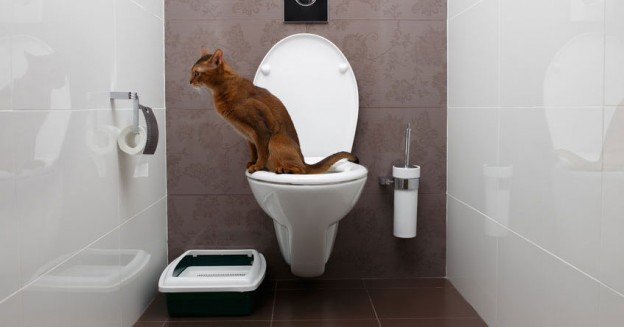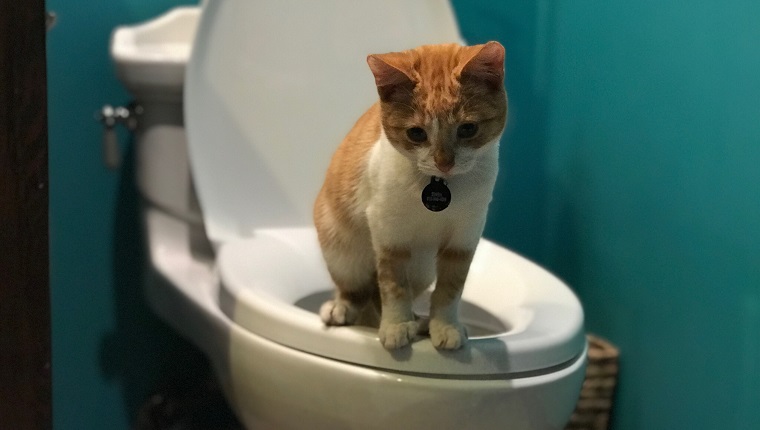Reasons You Should Avoid Flush Cat Poop Down Your Toilet - Crucial Information
Reasons You Should Avoid Flush Cat Poop Down Your Toilet - Crucial Information
Blog Article
We've unearthed the article involving Don’t flush cat feces down the toilet below on the web and thought it made perfect sense to share it with you on this page.

Introduction
As pet cat owners, it's necessary to bear in mind exactly how we take care of our feline buddies' waste. While it might appear hassle-free to purge pet cat poop down the commode, this method can have damaging consequences for both the setting and human health.
Alternatives to Flushing
Luckily, there are much safer and extra responsible means to take care of pet cat poop. Consider the adhering to choices:
1. Scoop and Dispose in Trash
The most usual approach of disposing of feline poop is to scoop it into an eco-friendly bag and toss it in the trash. Make certain to make use of a dedicated clutter inside story and take care of the waste without delay.
2. Usage Biodegradable Litter
Go with biodegradable feline litter made from products such as corn or wheat. These trashes are eco-friendly and can be securely dealt with in the garbage.
3. Hide in the Yard
If you have a yard, take into consideration burying pet cat waste in an assigned location away from veggie yards and water sources. Make certain to dig deep enough to stop contamination of groundwater.
4. Set Up a Pet Waste Disposal System
Purchase a pet waste disposal system specifically developed for feline waste. These systems utilize enzymes to break down the waste, minimizing smell and ecological effect.
Health and wellness Risks
In addition to ecological problems, flushing pet cat waste can additionally pose health and wellness risks to people. Feline feces may contain Toxoplasma gondii, a parasite that can cause toxoplasmosis-- a potentially extreme ailment, specifically for expectant women and people with damaged body immune systems.
Ecological Impact
Flushing pet cat poop presents hazardous pathogens and bloodsuckers right into the water, presenting a significant danger to aquatic communities. These pollutants can adversely influence aquatic life and compromise water high quality.
Conclusion
Accountable pet possession prolongs past providing food and sanctuary-- it also entails correct waste monitoring. By avoiding flushing feline poop down the toilet and selecting different disposal methods, we can decrease our environmental footprint and protect human health.
Why Can’t I Flush Cat Poop?
It Spreads a Parasite
Cats are frequently infected with a parasite called toxoplasma gondii. The parasite causes an infection called toxoplasmosis. It is usually harmless to cats. The parasite only uses cat poop as a host for its eggs. Otherwise, the cat’s immune system usually keeps the infection at low enough levels to maintain its own health. But it does not stop the develop of eggs. These eggs are tiny and surprisingly tough. They may survive for a year before they begin to grow. But that’s the problem.
Our wastewater system is not designed to deal with toxoplasmosis eggs. Instead, most eggs will flush from your toilet into sewers and wastewater management plants. After the sewage is treated for many other harmful things in it, it is typically released into local rivers, lakes, or oceans. Here, the toxoplasmosis eggs can find new hosts, including starfish, crabs, otters, and many other wildlife. For many, this is a significant risk to their health. Toxoplasmosis can also end up infecting water sources that are important for agriculture, which means our deer, pigs, and sheep can get infected too.
Is There Risk to Humans?
There can be a risk to human life from flushing cat poop down the toilet. If you do so, the parasites from your cat’s poop can end up in shellfish, game animals, or livestock. If this meat is then served raw or undercooked, the people who eat it can get sick.
In fact, according to the CDC, 40 million people in the United States are infected with toxoplasma gondii. They get it from exposure to infected seafood, or from some kind of cat poop contamination, like drinking from a stream that is contaminated or touching anything that has come into contact with cat poop. That includes just cleaning a cat litter box.
Most people who get infected with these parasites will not develop any symptoms. However, for pregnant women or for those with compromised immune systems, the parasite can cause severe health problems.
How to Handle Cat Poop
The best way to handle cat poop is actually to clean the box more often. The eggs that the parasite sheds will not become active until one to five days after the cat poops. That means that if you clean daily, you’re much less likely to come into direct contact with infectious eggs.
That said, always dispose of cat poop in the garbage and not down the toilet. Wash your hands before and after you clean the litter box, and bring the bag of poop right outside to your garbage bins.
https://trenchlesssolutionsusa.com/why-cant-i-flush-cat-poop/

As a reader about Don’t flush cat feces down the toilet, I figured sharing that excerpt was really useful. Don't hesitate to take a moment to share this post if you liked it. We truly appreciate reading our article about Can You Flush Cat Poop Down The Toilet?.
Call Report this page